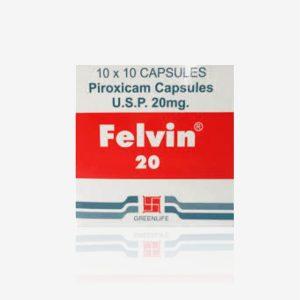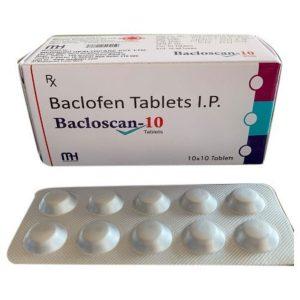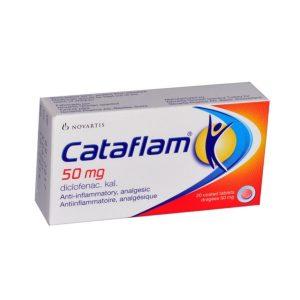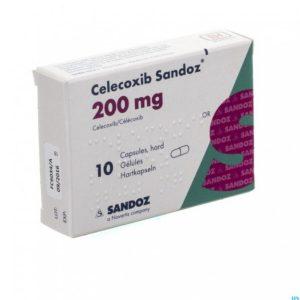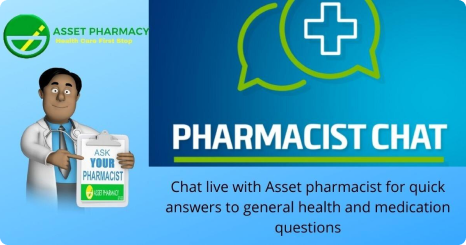Description
Tavanic Intravenous 500mg Solution, 100ml
Looking for a powerful antibiotic solution? Look no further than Tavanic Intravenous 500mg Solution. This product contains Levofloxacin, which is a highly effective antibiotic that can kill the bacteria responsible for many infections. So if you need an infusion that can get the job done, Tavanic is the solution for you.
Tavanic solution for infusion can be used to treat infections of the:
• Lungs, in people with pneumonia
• Urinary tract, including your kidneys or bladder
• Prostate gland, where you have a long lasting infection
• Skin and underneath the skin, including muscles. This is sometimes called ‘soft tissue’
In some special situations, Levofloxacin solution for infusion may be used to lessen the chances of
getting a pulmonary disease named anthrax or worsening of the disease after you are exposed to the bacteria causing ‘anthrax’.
Can someone who is pregnant or breastfeeding use Tavanic Intravenous 500mg Solution?
Do not take this medicine if you are pregnant or breast-feeding, think you may be pregnant or are planning to have a baby
Tavanic Intravenous 500mg Solution Reviews
After using Tavanic Intravenous 500mg Solution it’s helpful to let others know about your experience. Reviews of an item help other users know that medicines received have helped the condition it is claimed for, how well the treatment worked or any issues to be aware of. We invite our users to leave a review of both their treatment and of the service provided. Click on the reviews tab to see if there has been feedback on this item.
What is the price of Tavanic Intravenous 500mg Solution in Nigeria?
The price of Tavanic Intravenous 500mg Solution is N5,649
Where can you buy Tavanic Intravenous 500mg Solution In Nigeria?
You can Buy Tavanic Intravenous 500mg Solution at Asset Pharmacy Lagos Nigeria, Nigeria’s Largest Online Pharmacy.
Tavanic Intravenous 500mg Solution is a prescription drug that legally requires a medical prescription to be dispensed.
To order this product you confirm that you are under the care of your doctor or consultant and have been given permission by them for purchase, fulfillment & use in treatment with their written consent.
You will be required to send Asset Pharmacy your prescription
How to Use
How to use Tavanic Intravenous 500mg Solution
Your doctor will explain to you exactly how much Tavanic you will be given as well as how often and for how long.
How Tavanic solution for infusion is given
- Tavanic solution for infusion is a medicine for use in hospitals
- It will be given to you by a doctor or nurse as an injection. The injection will be into one of your veins and be given over a period of time (this is called an intravenous infusion)
- For 250 mg Levofloxacin solution for infusion, the infusion time should be 30 minutes or more
- For 500 mg Levofloxacin solution for infusion, the infusion time should be 60 minutes or more
- Your heart rate and blood pressure should be closely monitored.
This is because an unusual fast beating of the heart and a temporary lowering of blood pressure are possible side effects that have been seen during the infusion of a similar antibiotic. If your blood pressure drops noticeably while you are being given the infusion, it will be stopped straight away. How much Levofloxacin solution for infusion is given
- Your doctor will decide on how much Levofloxacin for infusion you should have • The dose will depend on the type of infection you have and where the infection is in your body • The length of your treatment will depend on how serious your infection is Use in adults and elderly The recommended dose is: • Pneumonia: 500 mg once or twice daily • Infection of urinary tract including your kidneys or bladder: 500 mg once daily • Prostate gland infection: 500 mg once daily • Infection of skin and underneath the skin including muscles: 500 mg once or twice daily Use in adults and elderly with kidney problems Your doctor may need to give you a lower dose.
Product Details
Product Information of Tavanic Intravenous 500mg Solution
What you need to know before you are given Tavanic solution for infusion
Do not have this medicine and tell your doctor if:
- you are allergic to levofloxacin, any other quinolone antibiotic such as moxifloxacin, ciprofloxacin or ofloxacin or any of the other ingredients of this medicine (listed in section 6). Signs of an allergic reaction include: a rash, swallowing or breathing problems, swelling of your lips, face, throat or tongue • you have ever had epilepsy PIL_Levofloxacin_5mg_ml_UK_Ver • you have ever had problems with your tendons such as tendonitis that was related to treatment with a ‘quinolone antibiotic’. A tendon is the cord that joins your muscle to your skeleton • you are a child or a growing teenager • you are pregnant, might become pregnant, or think you may be pregnant • you are breast-feeding Do not have this medicine if any of the above applies to you. If you are not sure, talk to your doctor, nurse or pharmacist before you are given Levofloxacin. Warnings and precautions Before taking this medicine You should not take fluoroquinolone/quinolone antibacterial medicines, including Levofloxacin, if you have experienced any serious adverse reaction in the past when taking a quinolone or fluoroquinolone. In this situation, you should inform your doctor as soon as possible. When taking this medicine Pain and swelling in the joints and inflammation or rupture of tendons may occur rarely. Your risk is increased if you are elderly (above 60 years of age), have received an organ transplant, have kidney problems or if you are being treated with corticosteroids. Inflammation and ruptures of tendons may occur within the first 48 hours of treatment and even up to several months after stopping of Levofloxacin therapy. At the first sign of pain or inflammation of a tendon (for example in your ankle, wrist, elbow, shoulder or knee), stop taking Levofloxacin, contact your doctor and rest the painful area. Avoid any unnecessary exercise as this might increase the risk of a tendon rupture. You may rarely experience symptoms of nerve damage (neuropathy) such as pain, burning, tingling, numbness and/or weakness especially in the feet and legs or hands and arms. If this happens, stop taking Levofloxacin and inform your doctor immediately in order to prevent the development of a potentially irreversible condition. If you feel sudden, severe pain in your abdomen, chest or back, which can be symptoms of aortic aneurysm and dissection, go immediately to an emergency room. Your risk may be increased if you are being treated with systemic corticosteroids. If you start experiencing a rapid onset of shortness of breath, especially when you lie down flat in your bed, or you notice swelling of your ankles, feet or abdomen, or a new onset of heart palpitations (sensation of rapid or irregular heartbeat), you should inform a doctor immediately. Serious skin reactions Serious skin reactions including Stevens-Johnson syndrome (SJS), toxic epidermal necrolysis (TEN), and drug reaction with eosinophilia and systemic symptoms (DRESS) have been reported with the use of levofloxacin. • SJS/TEN can appear initially as reddish target-like spots or circular patches often with central blisters on the trunk. Also, ulcers of mouth, throat, nose, genitals and eyes (red and swollen eyes) can occur. These serious skin rashes are often preceded by fever and/or flu-like symptoms. The rashes may progress to widespread peeling of the skin and life-threatening complications or be fatal • DRESS appears initially as flu-like symptoms and a rash on the face then an extended rash with a high body temperature, increased levels of liver enzymes seen in blood tests and an increase in a type of white blood cell (eosinophilia) and enlarged lymph nodes. PIL_Levofloxacin_5mg_ml_UK_Ver If you develop a serious rash or another of these skin symptoms, stop taking levofloxacin and contact your doctor or seek medical attention immediately. Prolonged, disabling and potentially irreversible serious side effects Fluoroquinolone/quinolone antibacterial medicines, including Levofloxacin, have been associated with very rare but serious side effects, some of them being long lasting (continuing for months or years), disabling or potentially irreversible. This includes tendon, muscle and joint pain of the upper and lower limbs, difficulty in walking, abnormal sensations such as pins and needles, tingling, tickling, numbness or burning (paraesthesia), sensory disorders including impairment of vision, taste and smell, and hearing, depression, memory impairment, severe fatigue, and severe sleep disorders. If you experience any of these side effects after taking Levofloxacin, contact your doctor immediately prior to continuing treatment. You and your doctor will decide on continuing the treatment considering also an antibiotic from another class. Talk to your doctor, nurse or pharmacist before you are given Levofloxacin if: • you are 60 years of age or older • you are using corticosteroids, sometimes called steroids (see section “Other medicines and Levofloxacin”) • you have ever had a fit (seizure) • you have had damage to your brain due to a stroke or other brain injury • you have kidney problems • you have something known as ‘glucose- 6- phosphate dehydrogenase deficiency’. You are more likely to have serious problems with your blood when taking this medicine • you have ever had mental health problems • you have ever had heart problems. Caution should be taken when using this kind of medicine, if you were born with or have a family history of prolonged QT interval (seen on ECG, electrical recording of the heart), salt imbalance in the blood (especially low level of potassium or magnesium in the blood), a very slow heart rhythm (called ‘bradycardia’), a weak heart (heart failure), a history of heart attack (myocardial infarction), you are female or elderly or you are taking other medicines that result in abnormal ECG changes (see section ”Other medicines and Levofloxacin”) • you are diabetic • you have ever had liver problems • you have myasthenia gravis • you have been diagnosed with an enlargement or “bulge” of a large blood vessel (aortic aneurysm or large vessel peripheral aneurysm) • you have experienced a previous episode of aortic dissection (a tear in the aorta wall) • you have been diagnosed with leaking heart valves (heart valve regurgitation) • you have a family history of aortic aneurysm or aortic dissection or congenital heart valve disease, or other risk factors or predisposing conditions (e.g. connective tissue disorders such as Marfan syndrome or Ehlers-Danlos syndrome, Turner syndrome, Sjögren’s syndrome [an inflammatory autoimmune disease], or vascular disorders such as Takayasu arteritis, giant cell arteritis, Behcet’s disease, high blood pressure, or known atherosclerosis, rheumatoid arthritis [a disease of the joints] or endocarditis [an infection of the heart]) • you have ever developed a severe skin rash or skin peeling, blistering and/or mouth sores after taking levofloxacin. If you are not sure if any of the above applies to you, talk to your doctor, nurse or pharmacist before PIL_Levofloxacin_5mg_ml_UK_Ver being given Levofloxacin. Keep out of direct sunlight while having this medicine and for 2 days after you stop having it. This is because your skin will become much more sensitive to the sun and may burn, tingle or severely blister if you do not take the following precautions: • Make sure you use high factor sun cream • Always wear a hat and clothes which cover your arms and legs • Avoid sun beds Other medicines and Levofloxacin Tell your doctor or pharmacist if you are taking, have recently taken or might take any other medicines. This is because Levofloxacin can affect the way some other medicines work. Also, some medicines can affect the way Levofloxacin works. In particular, tell your doctor if you are taking any of the following medicines. This is because it can increase the chance of you getting side effects, when taken with Levofloxacin: • Corticosteroids, sometimes called steroids – used for inflammation. You may be more likely to have inflammation and/or rupture of your tendons • Warfarin – used to thin the blood. You may be more likely to have a bleed. Your doctor may need to take regular blood tests to check how well your blood can clot • Theophylline – used for breathing problems. You are more likely to have a fit (seizure) if taken with Levofloxacin • Non-steroidal anti-inflammatory drugs (NSAIDS) – used for pain and inflammation such as aspirin, ibuprofen, fenbufen, ketoprofen and indomethacin. You are more likely to have a fit (seizure) if taken with Levofloxacin • Cyclosporine – used after organ transplants. You may be more likely to get the side effects of cyclosporine • Medicines known to affect the way your heart beats. This includes medicines used for abnormal heart rhythm (antiarrhythmics such as. quinidine, hydroquinidine, disopyramide, sotalol, dofetilide, ibutilide and amiodarone), for depression (tricyclic antidepressants such as amitriptyline and imipramine), for psychiatric disorders (antipsychotics), and for bacterial infections (‘macrolide’ antibiotics such as erythromycin, azithromycin and clarithromycin) • Probenecid – used for gout, and cimetidine – used for ulcers and heartburn. Special care should be taken when taking either of these medicines with Levofloxacin. If you have kidney problems, your doctor may want to give you a lower dose. Urine tests for opiates Urine tests may show ‘false-positive’ results for strong painkillers called ‘opiates’ in people having Levofloxacin. If your doctor has prescribed a urine test, tell your doctor you are having Levofloxacin. Tuberculosis tests This medicine may cause “false negative” results for some tests used in a laboratory to search for the bacteria causing tuberculosis. Pregnancy and breast-feeding Do not have this medicine if: • You are pregnant, might become pregnant or think you may be pregnant • You are breast-feeding or planning to breast-feed PIL_Levofloxacin_5mg_ml_UK_Ver Driving and using machines You may get side effects after being given this medicine, including feeling dizzy, sleepy, a spinning feeling (vertigo) or changes to your eyesight. Some of these side effects can affect you being able to concentrate and your reaction speed. If this happens, do not drive or carry out any work that requires a high level of attention. Levofloxacin solution for infusion contains sodium This medicine contains 177 mg sodium (main component of cooking/table salt) in each 50 ml vial. This is equivalent to 8.85% of the recommended maximum daily dietary intake of sodium for an adult. This medicine contains 354 mg sodium (main component of cooking/table salt) in each 100 ml vial. This is equivalent to 17.7% of the recommended maximum daily dietary intake of sodium for an adult
Side Effects
Side Effects of Tavanic Intravenous 500mg Solution
Possible side effects
Like all medicines, this medicine can cause side effects, although not everybody gets them.
These effects are normally mild or moderate and often disappear after a short time.
Stop having Levofloxacin and tell a doctor or nurse straight away if you notice any of the following serious side effects:
Rare (may affect up to 1 in 1,000 people) • Watery diarrhoea which may have blood in it, possibly with stomach cramps and a high temperature. These could be signs of a severe bowel problem • Pain and inflammation in your tendons or ligaments which could lead to rupture. The Achilles tendon is affected most often • Muscle weakness. This is important in people with myasthenia gravis (a rare disease of the nervous system) • Fits (convulsions) • Reduction in blood platelets, which increases risk of bleeding or bruising (thrombocytopenia) • Widespread rash, high body temperature, liver enzyme elevations, blood abnormalities (eosinophilia), enlarged lymph nodes and other body organs involvement (Drug Reaction with Eosinophilia and Systemic Symptoms which is also known as DRESS or drug hypersensitivity syndrome). See also section 2 • Syndrome associated with impaired water excretion and low levels of sodium (SIADH) Very rare (may affect up to 1 in 10,000 people) • You have an allergic reaction. The signs may include a rash, swallowing or breathing problems, swelling of your lips, face, throat, or tongue • Burning, tingling, pain, or numbness. These may be signs of something called ‘neuropathy’ PIL_Levofloxacin_5mg_ml_UK_Ver Frequency unknown (frequency cannot be estimated from the available data) • Serious skin rashes including Stevens-Johnson syndrome and toxic epidermal necrolysis. These can appear as reddish target-like macules or circular patches often with central blisters on the trunk, skin peeling, ulcers of mouth, throat, nose, genitals and eyes and can be preceded by fever and flu-like symptoms. See also section 2 • Loss of appetite, skin and eyes becoming yellow in colour, dark-coloured urine, itching, or tender stomach (abdomen). These may be signs of liver problems which may include a fatal failure of the liver • Abnormal muscle breakdown which can lead to kidney problems (rhabdomyolysis) If your eyesight becomes impaired or if you have any other eye disturbances whilst taking Levofloxacin, consult an eye specialist immediately. Tell your doctor if any of the following side effects gets serious or lasts longer than a few days: Common (may affect up to 1 in 10 people) • Sleeping problems • Headache, feeling dizzy • Feeling sick (nausea, vomiting) and diarrhoea • Increase in the level of some liver enzymes in your blood • Reactions at the site of infusion • Inflammation of a vein Uncommon (may affect up to 1 in 100 people) • Changes in the number of other bacteria or fungi, infection by fungi named ‘Candida’, which may need to be treated • Changes in the number of white blood cells shown up in the results of some blood tests (leukopenia, eosinophilia) • Feeling stressed (anxiety), feeling confused, feeling nervous, feeling sleepy, trembling, a spinning feeling (vertigo) • Shortness of breath (dyspnoea) • Changes in the way things taste, loss of appetite, stomach upset or indigestion (dyspepsia), pain in your stomach area, feeling bloated (flatulence) or constipation • Itching and skin rash, severe itching or hives (urticaria), sweating too much (hyperhidrosis) • Joint pain or muscle pain • Blood tests may show unusual results due to liver (bilirubin increased) or kidney (creatinine increased) problems • General weakness Rare (may affect up to 1 in 1,000 people) • Low number of white blood cells (neutropenia) • Exaggerated immune response (hypersensitivity) • Lowering of your blood sugar levels (hypoglycaemia). This is important for people who have diabetes • Seeing or hearing things that are not there (hallucinations, paranoia), change in your opinion and thoughts (psychotic reactions) with a risk of having suicidal thoughts or actions • Feeling depressed, mental problems, feeling restless (agitation), abnormal dreams or nightmares PIL_Levofloxacin_5mg_ml_UK_Ver • Tingly feeling in your hands and feet (paraesthesia) • Problems with your hearing (tinnitus) or eyesight (blurred vision) • Unusual fast beating of your heart (tachycardia) or low blood pressure (hypotension) • Changes in the way your kidney works and occasional kidney failure which may be due to an allergic kidney reaction called ‘interstitial nephritis’ • Fever • Sharply demarcated, erythematous patches with/without blistering that develop within hours of administration of levofloxacin and heals with post inflammatory residual hyperpigmentation; it usually recurs at the same site of the skin or mucous membrane upon subsequent exposure to levofloxacin. Other side effects include: • Lowering in red blood cells (anemia): this can make the skin pale or yellow due to damage of the red blood cells; lowering in the number of all types of blood cells (pancytopenia) • Fever, sore throat and a general feeling of being unwell that does not go away. This may be due to a lowering in the number of white blood cells (agranulocytosis) • Loss of circulation (anaphylactic-like shock) • Increase of your blood sugar levels (hyperglycaemia) or lowering of your blood sugar levels leading to coma (hypoglycaemic coma). This is important for people who have diabetes • Changes in the way things smell, loss of smell or taste (parosmia, anosmia, ageusia) • Problems moving and walking (dyskinesia, extrapyramidal disorders) • Temporary loss of consciousness or posture (syncope) • Temporary loss of vision • Impairment or loss of hearing • Abnormal fast heart rhythm, life-threatening irregular heart rhythm including cardiac arrest, alteration of the heart rhythm (called ‘prolongation of QT interval’, seen on ECG, electrical activity of the heart) • Difficulty breathing or wheezing (bronchospasm) • Allergic lung reactions • Pancreatitis • Inflammation of the liver (hepatitis) • Increased sensitivity of your skin to sun and ultraviolet light (photosensitivity) • Inflammation of the vessels that carry blood around your body due to an allergic reaction (vasculitis) • Inflammation of the tissue inside the mouth (stomatitis) • Joint redness and swelling (arthritis) • Pain, including pain in the back, chest and extremities • Attacks of porphyria in people who already have porphyria (a very rare metabolic disease) • Persistent headache with or without blurred vision (benign intracranial hypertension) Very rare cases of long lasting (up to months or years) or permanent adverse drug reactions, such as tendon inflammation, tendon rupture, joint pain, pain in the limbs, difficulty in walking, abnormal sensations such as pins and needles, tingling, tickling, burning, numbness or pain (neuropathy), depression, fatigue, sleep disorders, memory impairment, as well as impairment of hearing, vision, and taste and smell have been associated with administration of quinolone and fluoroquinolone antibiotics, in some cases irrespective of pre-existing risk factors. Cases of an enlargement and weakening of the aortic wall or a tear in the aortic wall (aneurysms and PIL_Levofloxacin_5mg_ml_UK_Ver dissections), which may rupture and may be fatal, and of leaking heart valves have been reported in patients receiving fluoroquinolones. See also section 2. Reporting of side effects If you get any side effects, talk to your doctor, pharmacist or nurse. This includes any possible side effects not listed in this leaflet.
Ingredients
Product Ingredients of Tavanic Intravenous 500mg Solution
The active substance is levofloxacin as levofloxacin hemihydrate. One ml of solution for infusion contains 5 mg of levofloxacin.
Each 100 ml glass vial contains levofloxacin 500 mg.
– The other ingredients are sodium chloride, hydrochloric acid and water for injection.
How to store
How to store Tavanic Intravenous 500mg Solution
Keep this medicine out of the sight and reach of children.
Keep the vial in the outer carton in order to protect from light.
No protection from light is required during the infusion.
Once the infusion vial has been opened (rubber stopper perforated), the solution should be used immediately (within 3 hours) in order to prevent any bacterial contamination.
Do not use this medicine after the expiry date which is stated on the carton and the vial after EXP.
The expiry date refers to the last day of that month.
Do not use this medicine if you notice that the solution is not clear, greenish-yellow solution and/or has particles in it.
Do not throw away any medicines via wastewater or household waste. Ask your nurse or pharmacist how to throw away medicines you no longer use. These measures will help protect the environment.
Prescription Product
This product requires a prescription from your Doctor.
Please follow the instruction received from the pharmacy on how to forward your prescription to the pharmacy after you have paid for the medicine.
A prescription drug is a pharmaceutical medication that legally requires a medical prescription to be dispensed.
To order this product you confirm that you are under the care of your doctor or consultant and have been given permission by them for purchase, fulfillment & use in treatment with their written consent
Delivery
Delievry time are estimates. Can vary due to the time of day you order.
Delivery time estimate are subject to the courier company.
Shipping to Lagos cost starts from N1850 Next day delivery
Shipping to Rest Of Nigeria – 2-3 days cost starts from N2000
Shipping to Rest of Africa – 5-7 working days Cost starts from N12000
Shipping to Europe 7 – 14 working days Cost srats from N18000
Shipping to Rest of the world – 7 – 14 days Cost starts from N18000




